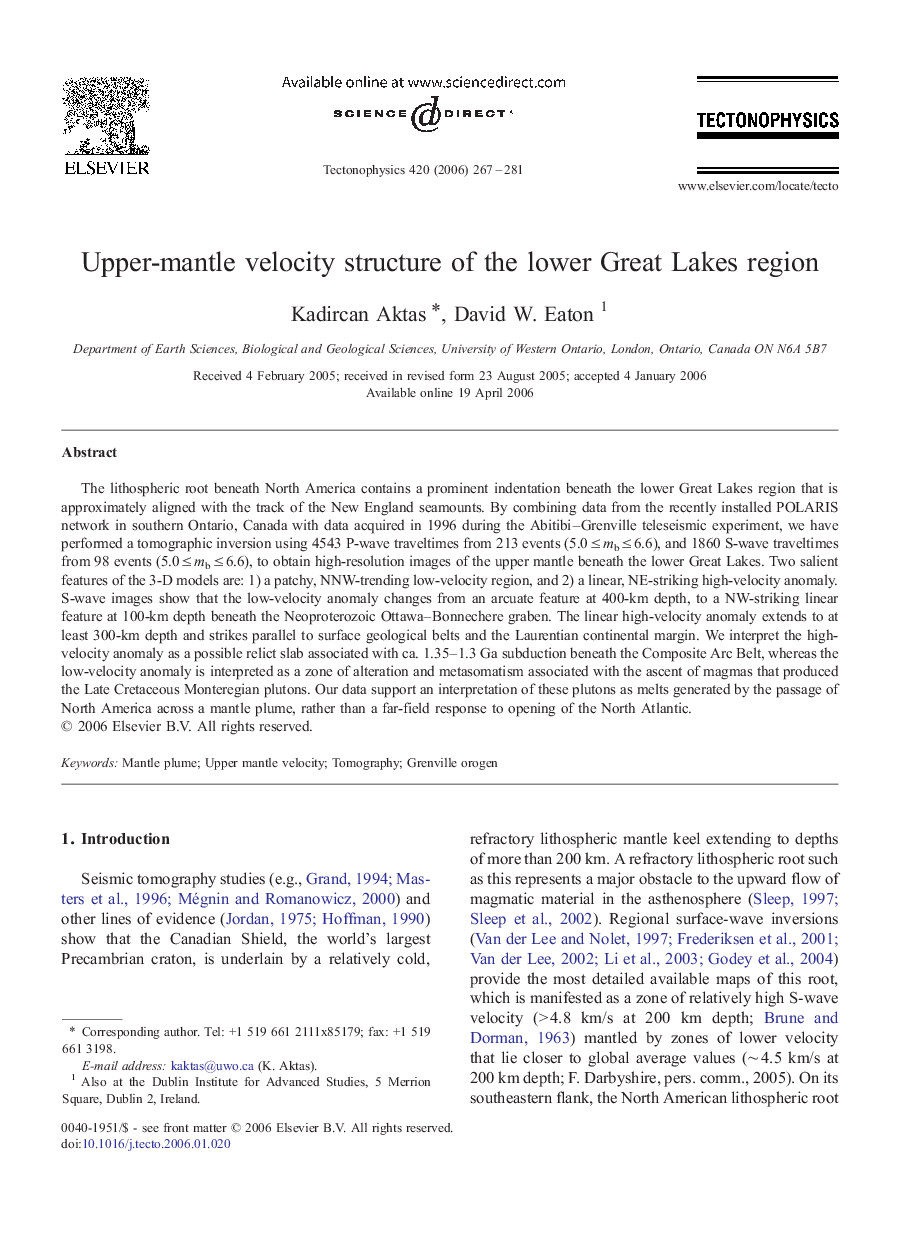| Article ID | Journal | Published Year | Pages | File Type |
|---|---|---|---|---|
| 4695120 | Tectonophysics | 2006 | 15 Pages |
The lithospheric root beneath North America contains a prominent indentation beneath the lower Great Lakes region that is approximately aligned with the track of the New England seamounts. By combining data from the recently installed POLARIS network in southern Ontario, Canada with data acquired in 1996 during the Abitibi–Grenville teleseismic experiment, we have performed a tomographic inversion using 4543 P-wave traveltimes from 213 events (5.0 ≤ mb ≤ 6.6), and 1860 S-wave traveltimes from 98 events (5.0 ≤ mb ≤ 6.6), to obtain high-resolution images of the upper mantle beneath the lower Great Lakes. Two salient features of the 3-D models are: 1) a patchy, NNW-trending low-velocity region, and 2) a linear, NE-striking high-velocity anomaly. S-wave images show that the low-velocity anomaly changes from an arcuate feature at 400-km depth, to a NW-striking linear feature at 100-km depth beneath the Neoproterozoic Ottawa–Bonnechere graben. The linear high-velocity anomaly extends to at least 300-km depth and strikes parallel to surface geological belts and the Laurentian continental margin. We interpret the high-velocity anomaly as a possible relict slab associated with ca. 1.35–1.3 Ga subduction beneath the Composite Arc Belt, whereas the low-velocity anomaly is interpreted as a zone of alteration and metasomatism associated with the ascent of magmas that produced the Late Cretaceous Monteregian plutons. Our data support an interpretation of these plutons as melts generated by the passage of North America across a mantle plume, rather than a far-field response to opening of the North Atlantic.
